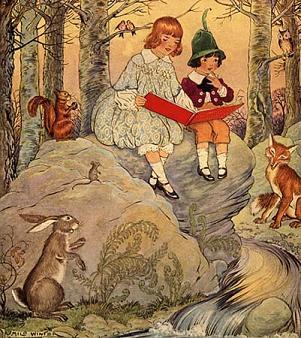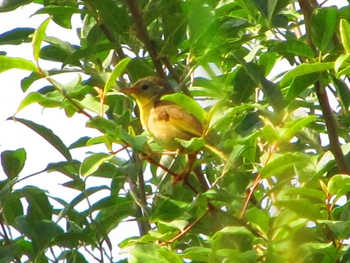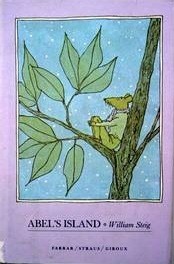Another Herd of Horse Books
Curious about what kinds of comparisons might emerge among the many horse books I’ve read to my 7-year-old daughter, I’ve started keeping track. I want to do one more post about them, then wait till a few more accumulate before doing another. One qualification: we also read books on other topics! These are ones that relate to a particular interest of hers, but she has other interests too, as does my 4-year-old daughter.

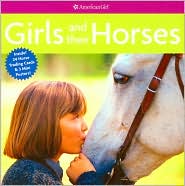
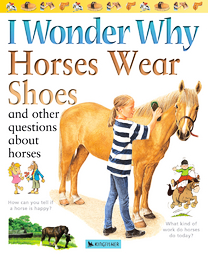 I Wonder Why Horses Wear Shoes is another favorite informational book. It’s a slim paperback with lots of illustrations, organized according to questions. It accompanies us many places because it’s easy to carry and useful for young information hounds.
I Wonder Why Horses Wear Shoes is another favorite informational book. It’s a slim paperback with lots of illustrations, organized according to questions. It accompanies us many places because it’s easy to carry and useful for young information hounds.
 Flip, and Flip and the Cows, are paperbacks that survived my own childhood. Flip is a young colt learning about life as a horse, and he was my first acquaintance with Wesley Dennis as an illustrator. Later I would discover his illustrations in many Marguerite Henry books. The stories are simple and good for young children. My 7-year-old has outgrown the stories, but not the illustrations.
Flip, and Flip and the Cows, are paperbacks that survived my own childhood. Flip is a young colt learning about life as a horse, and he was my first acquaintance with Wesley Dennis as an illustrator. Later I would discover his illustrations in many Marguerite Henry books. The stories are simple and good for young children. My 7-year-old has outgrown the stories, but not the illustrations.
Sometimes I Dream Horses, written by Jeanne Whitehouse Peterson and illustrated with beautiful pencil drawings by Eleanor Schick, is about a young girl who dreams of horses on her grandmother’s farm in the Southwest. We found it at the library. It’s a nice story about horse-lovers in two generations.
 Winter Pony is Jean Slaughter Doty’s sequel to one of my childhood favorites, Summer Pony. This story follows Ginny through a winter with her pony Mokey, who learns how to pull a sleigh and then is discovered to be in foal. There’s more of Pam and Ginny’s developing friendship as well as lots of description of this exciting new chapter of life for Mokey. The story culminates in the foal’s birth, with Ginny supervising. It’s very readable and enjoyable, and we finished it in under a week.
Winter Pony is Jean Slaughter Doty’s sequel to one of my childhood favorites, Summer Pony. This story follows Ginny through a winter with her pony Mokey, who learns how to pull a sleigh and then is discovered to be in foal. There’s more of Pam and Ginny’s developing friendship as well as lots of description of this exciting new chapter of life for Mokey. The story culminates in the foal’s birth, with Ginny supervising. It’s very readable and enjoyable, and we finished it in under a week.
 This one was given to us by my friend JW. It’s about a Native American girl who prefers horses to human companions, and eventually gets her wish to live with them, with the blessing of her family. The illustrations are lovely, simple and stylized. Our other book about a Native American child who longs for a horse is Indian Two-Feet and His Horse, a book saved since my own childhood. It’s written by Margaret Friskey and illustrated by Ezra Jack Keats, and tells the tale of a boy who longs for a horse, finds a wounded one, and builds a lasting friendship by caring for it. Both these tales offer an alternative to the conquering notion of ownership, and present instead a vision of friendship with the natural world.
This one was given to us by my friend JW. It’s about a Native American girl who prefers horses to human companions, and eventually gets her wish to live with them, with the blessing of her family. The illustrations are lovely, simple and stylized. Our other book about a Native American child who longs for a horse is Indian Two-Feet and His Horse, a book saved since my own childhood. It’s written by Margaret Friskey and illustrated by Ezra Jack Keats, and tells the tale of a boy who longs for a horse, finds a wounded one, and builds a lasting friendship by caring for it. Both these tales offer an alternative to the conquering notion of ownership, and present instead a vision of friendship with the natural world.
One other book we found at the library is about a Native American boy with a love for a horse: Black Kettle: King of the Wild Horses by Justin Denzel. Though the initial picture of Native Americans isn’t flattering — Little Bear, a 9-year-old, is part of a raid on settlers, and he steals the black colt — the relationship between Native Americans and settlers quickly fades into the background. However the theme of the Native American valuing wildness and freedom more than the white man remains at the forefront of the story; Little Bear frees the colt, who becomes famous as “king of the wild horses” and is targeted for capture more than once by a shopkeeper named Lockard. I have to believe this is a main source of the story in Disney’s movie Spirit. It’s interesting that none of these three stories identify their main characters as belonging to a particular tribe.
 Now for some more oldies: Little Black, A Pony by Walter Farley is about a boy whose small black pony is relegated to semi-retirement when the boy learns to ride a larger horse, only to rise to heroism when the boy falls through the ice later in the story, and Little Black pulls him out. This one is good for an early reader. There’s some tension, but also a subtheme about importance and friendship not being determined by visible things. Both the boy and the pony learn this; the boy learns that riding a big horse doesn’t make him independent or all-powerful after all, and the pony learns that there are some things his small size enables him and him alone to do.
Now for some more oldies: Little Black, A Pony by Walter Farley is about a boy whose small black pony is relegated to semi-retirement when the boy learns to ride a larger horse, only to rise to heroism when the boy falls through the ice later in the story, and Little Black pulls him out. This one is good for an early reader. There’s some tension, but also a subtheme about importance and friendship not being determined by visible things. Both the boy and the pony learn this; the boy learns that riding a big horse doesn’t make him independent or all-powerful after all, and the pony learns that there are some things his small size enables him and him alone to do.
 Last but not least, there have been a number of C.W. Anderson books that offer adventure and mild tension, equestrian knowledge, and great drawings. It’s been nice to follow Billy and his pony Blaze through a series of picture books. Stories like The Rumble Seat Pony, A Pony for Three, and The Lonesome Colt round out the collection, building on the winning theme of children and their horses. My daughter knows which shelf these are on at the library, so we’ve brought them home more than once — well-worn pieces of history that have been loved by many before us.
Last but not least, there have been a number of C.W. Anderson books that offer adventure and mild tension, equestrian knowledge, and great drawings. It’s been nice to follow Billy and his pony Blaze through a series of picture books. Stories like The Rumble Seat Pony, A Pony for Three, and The Lonesome Colt round out the collection, building on the winning theme of children and their horses. My daughter knows which shelf these are on at the library, so we’ve brought them home more than once — well-worn pieces of history that have been loved by many before us.
